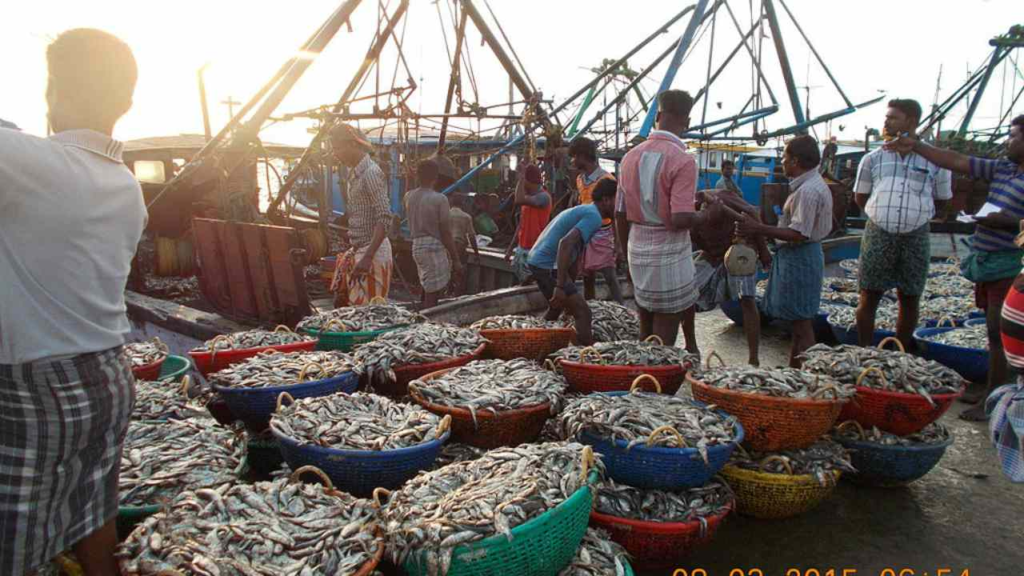
IMPORTANT FACTS
֍Fisheries is an economic activity that involves harvesting fish or any aquatic organism from the wild (Capture Fisheries) or raising them in confinement (Culture Fisheries/ Aquaculture). It may be Traditional/ Small Scale Fisheries (SSF) for sustenance, or Large-Scale/ Commercial Fisheries for profit.
֍The fisheries sector of India has gradually evolved over the years to become an important pillar of socio-economic growth of the nation.
֍India is 3rd largest fish producing country with around 8% share in global fish production.
֍Globally, India stands 2nd in aquaculture production and is one of the top shrimp producing and exporting nations.
֍As per the FAO-State of World Fisheries and Aquaculture 2022 (SOFIA,2022), India is the largest inland capture fish producing nation in the world.
֍Fisheries sector provides livelihood, employment and entrepreneurship to more than 2.8 crore fishers and fish farmers at primary level.
֍Andhra Pradesh is the largest producer of inland fish in India followed by West Bengal in year 2022.
֍The fisheries sector in India has shown a sustained annual average growth rate of 8.61% for the 8-year period from 2014-15 to 2021-22 (at constant prices).
֍The GVA of Fisheries Sector has increased to 1,47,518.87 crore in 2021-22 (at constant prices) and to 2,88,526.19 crore in 2021-22 (at current prices).
֍The Fisheries Sector contributes 1.069% in the National GVA and 6.86% in Agriculture GVA.
֍National Fish Production for year 2021-22 is expected nearly 162.48 lakh tons.
֍Fish production from inland fisheries and aquaculture increased from mere 2.18 lakh tons in 1950-51 to 121.12 lakh tons in 2021-22.
֍India’s seafood exports increased to Rs. 63,969.14 crore during FY 2022-23.
֍Today, Indian seafood is exported to 129 countries with largest importer being USA.
֍Shrimp production of the country increased to a record 11.84 lakh tons at the end of 2022-23.
֍Similarly, the shrimp exports have increased to Rs 43,135 crore at the end of 2022-23.
